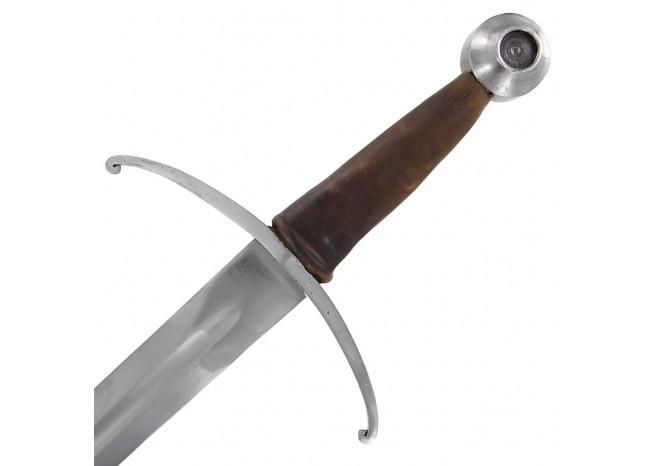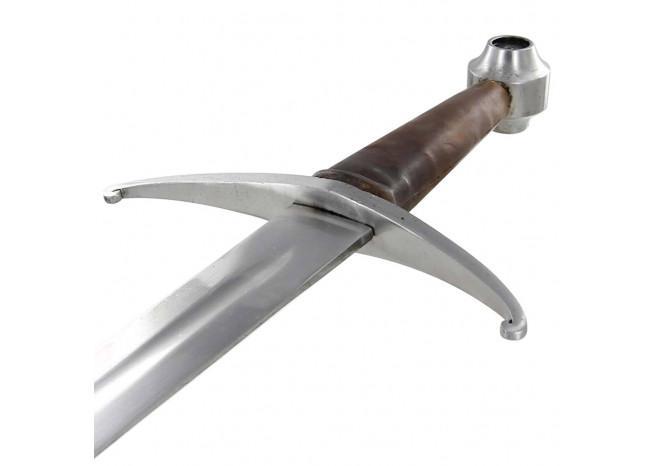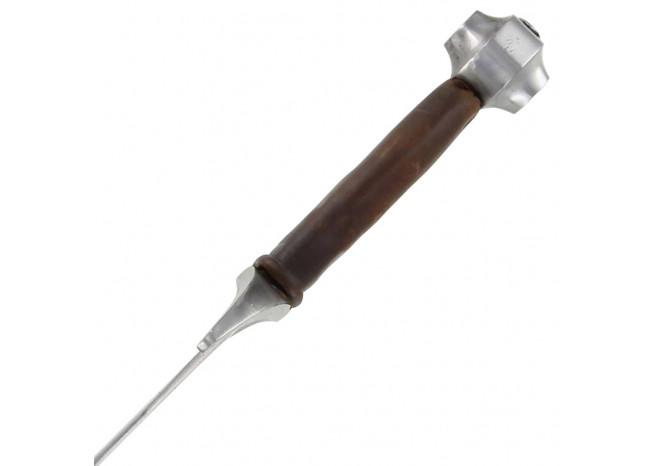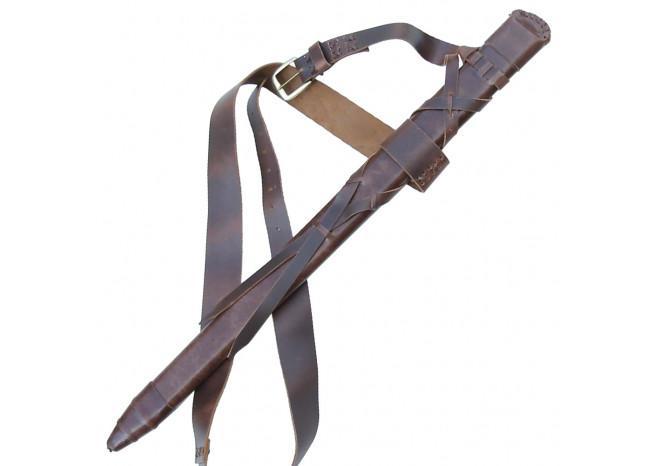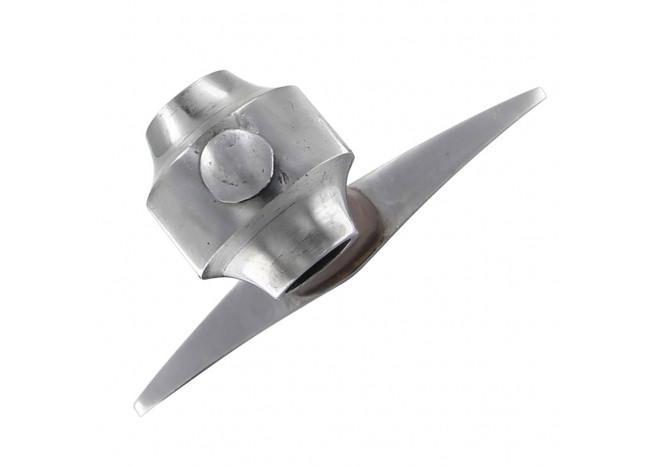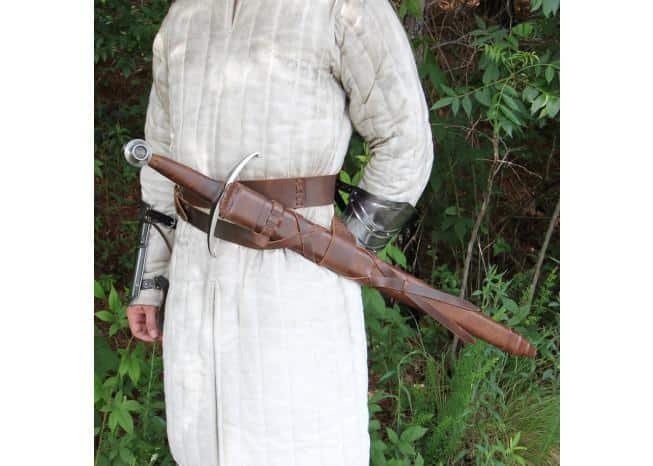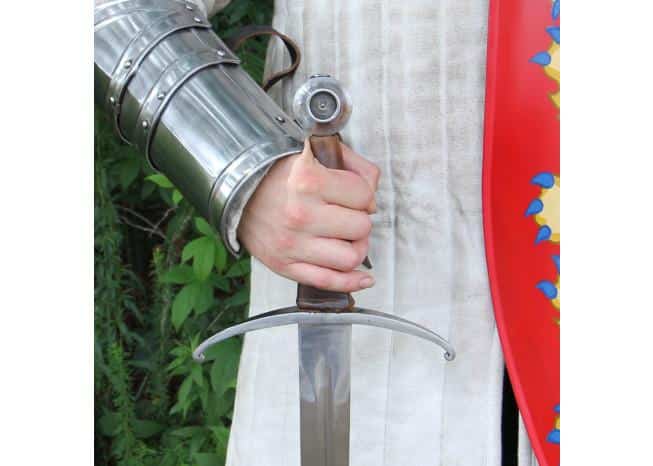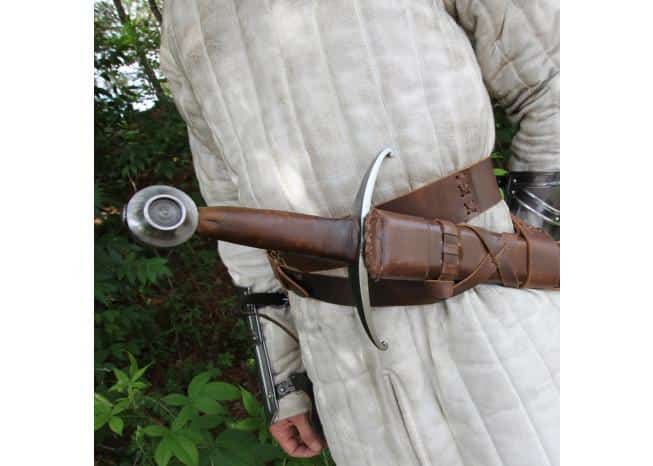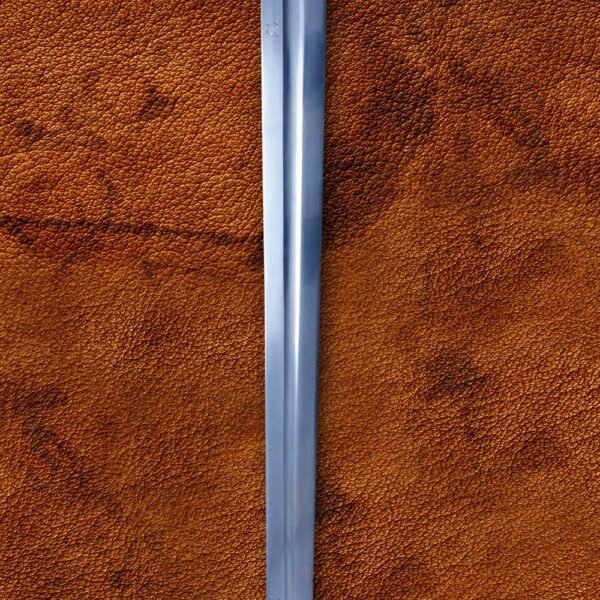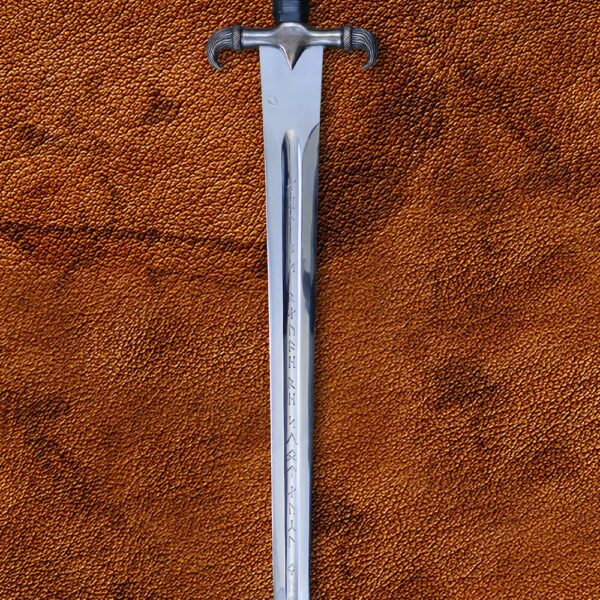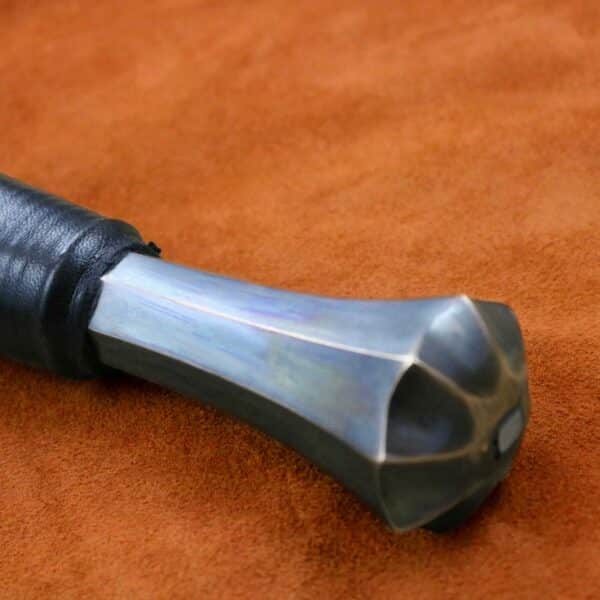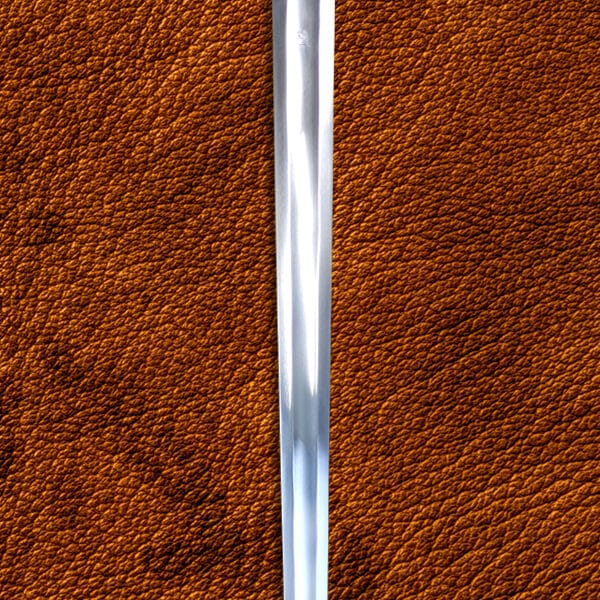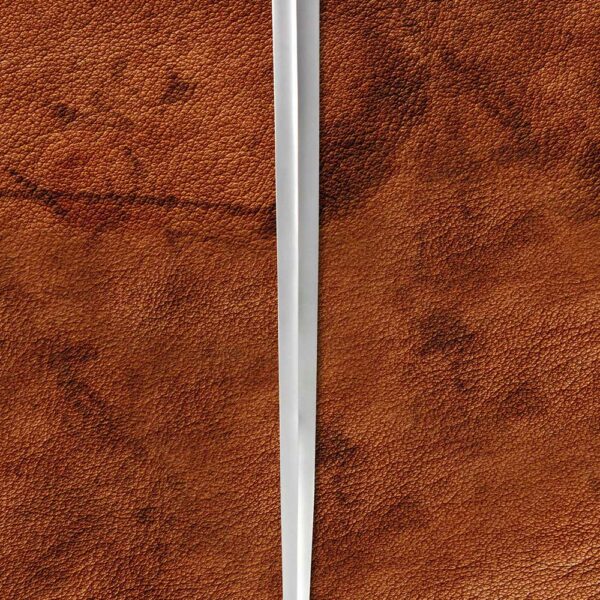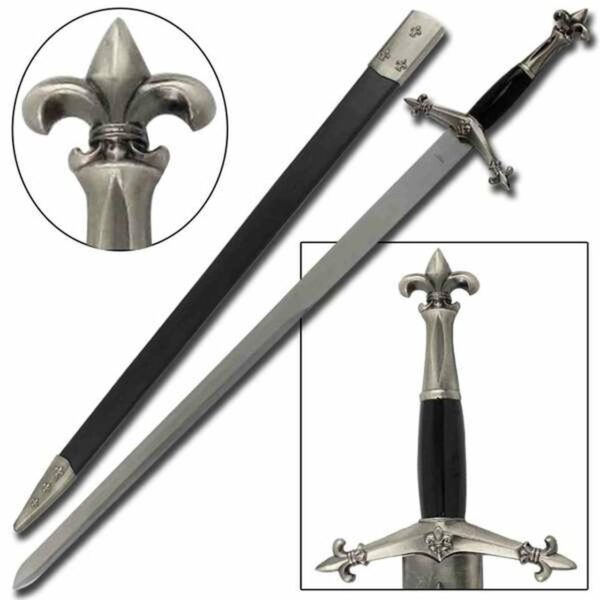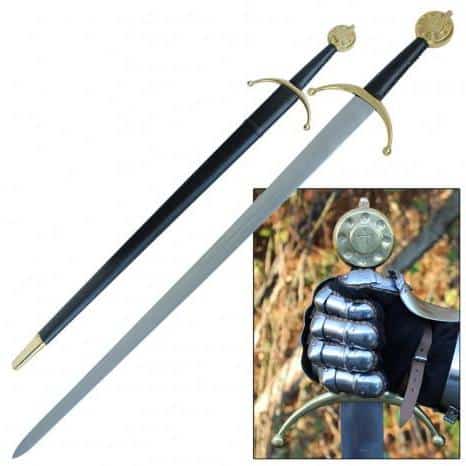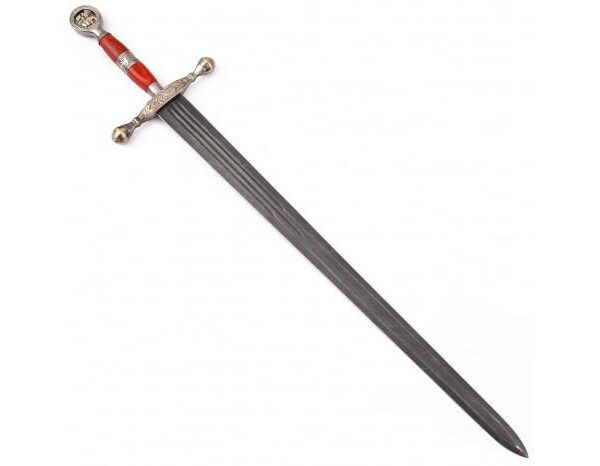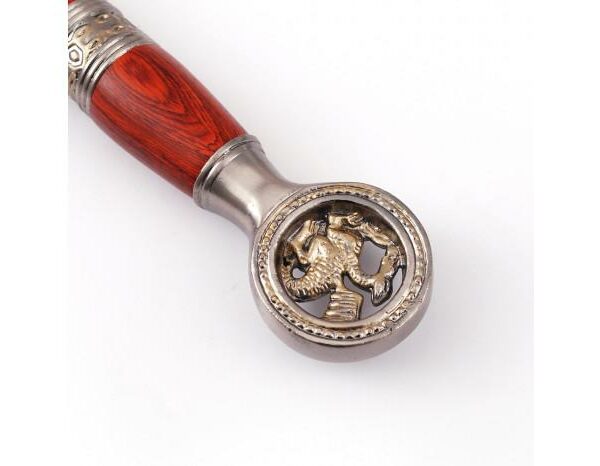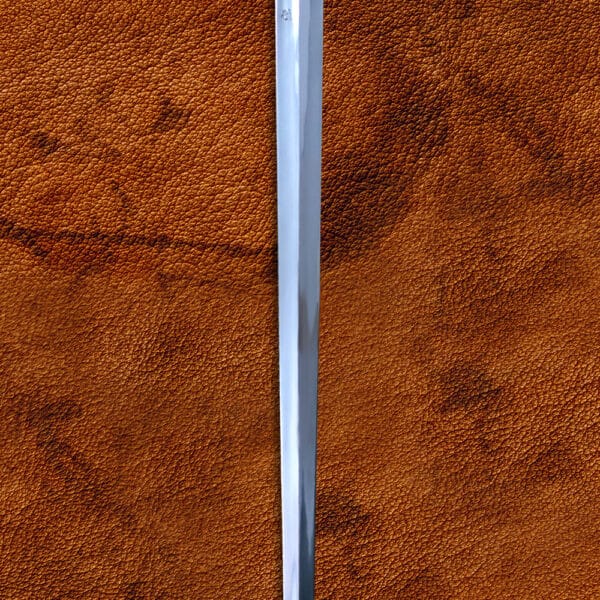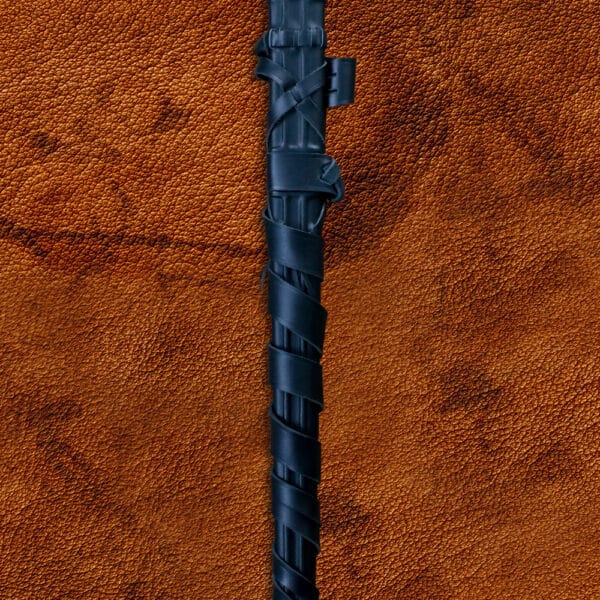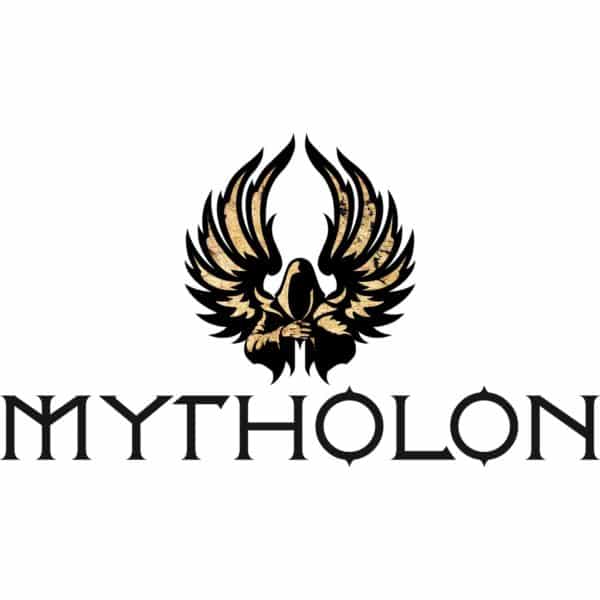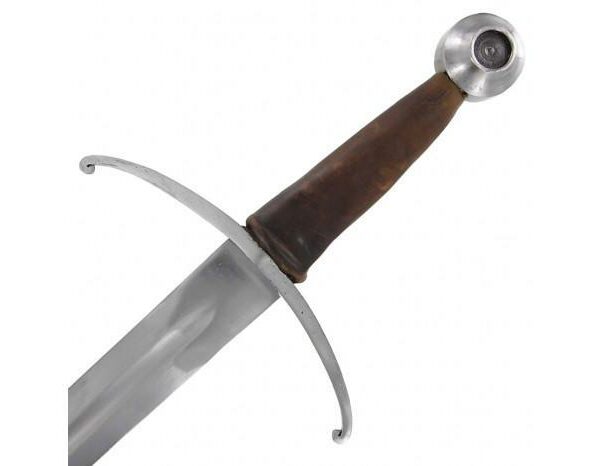Gothic Mounted Warriors Sword
(About): An Elegant Gothic Blade from the Era of Transitional Armor
Our Gothic Mounted Warriors Sword is a fantastic way to import the spirit of Late Medieval warfare into your outfit. It would be an excellent way to depict an armored Gothic knight in the era of transitional armor or the early period of Gothic plate for a Renn Faire or re-enactment. As well, it’s an extremely eye-catching weapon in its own right that could be used to give an instant air of authenticity to a fantasy roleplay outfit.
The Blade of a Gothic Knight, Safely Reproduced
The blade of our Gothic Mounted Warriors Sword is the ideal design for a physical roleplayer or re-enactor. It is a slender, subtly tapering blade that conforms to Type XII in the classification system written by sword historian Ewart Oakeshott. This blade design was what many consider to be the high-point of the chivalric arming sword. It emerged in the first half of the 13th-century CE, as knights began to experiment by augmenting their chainmail armor with pieces of armor made from iron and steel plates. Our Gothic Mounted Warriors Sword blade tapers subtly and evenly from the forte, producing a long and elegant shape, impressed with a weight-reducing fuller. It also sports a short ricasso, demonstrating the fashion for looping the finger over the cross-guard for extra accuracy and control that developed amidst Late Medieval fighting styles.
We at Medieval Ware are extremely conscious of aiding our customers to roleplay and re-enact in the safest way possible, so that you can spend more time immersed in your character. Hence, we have ensured that our Gothic Mounted Warriors Sword is equipped with excellent safety features. The edge of the blade is rebated (blunted), so that it is safe from mishaps. The point of the blade is rounded, as well as being reinforced by a raised midrib after the end of the fuller: this means that it is also more resistant to breaking or shattering. The blade has been forged from carbon steel, meaning it is rugged and resilient to the knocks and scrapes of re-enactment. Obviously, all reproduction swords can be dangerous if not carefully handled – but we have endeavoured to provide you with the tools to wield our Gothic Mounted Warriors sword on the battlefield safely.
A Rugged, Functional Hilt
The hilt of our Gothic Mounted Warriors Sword is a handsome classic style from the Late Medieval heartland of the Holy Roman Empire. It is made from tough mild steel, and so won’t let you down for re-enactment after re-enactment. The cross-guard is of a simple curved type, elegantly framing the ricasso of the blade. The quillons narrow handsomely to curled terminations, which would have given a combatant an excellent degree of control over an opponent’s weapon in close combat. The hand-grip is a comfortable single-hand length, turned in an oval shape that will not slip in the hand, covered with hand-stitched tan leather. The pommel of our Gothic Mounted Warriors Sword is a large hollowed wheel-type, conforming to Oakeshott’s Type H1. The pommel of an arming sword is a vitally important piece of design: its precise weighting counterbalances the blade so that its point of balance is near the hilt of the weapon, allowing it to move weightlessly and accurately in combat. The hilt of our Gothic Mounted Warriors Sword has been constructed with a full-tang and peened into place – this means all of the hilt parts have been threaded onto the tail of the blade, with the protruding end heated and hammered flat, locking everything tightly and securely. This means that it is a re-enactment-safe weapon which can be wielded without danger of it coming apart. It also comes with a seriously impressive high-quality bespoke leather scabbard and baldric.
(History): The Arming Sword in the Era of Transitional Armor
Over the whole medieval era, the general trend of one-handed arming-swords was from broad, flat blades with short (or even rounded) points and lenticular cross-sections, towards narrow, sharply pointed blades with hexagonal or diamond-shaped cross-sections. Our Gothic Mounted Warriors Sword stands at the crossroads of these styles, and we can see the heritage of the Viking Age swords within it as they finally became irrelevant in a rapidly changing world.
A Norman Heritage
The earlier Norman-style arming swords that Type XII swords developed from were long, straight blades with less pronounced points that were made with a lenticular (lens-shaped) cross-section. They were extremely effective cutting weapons in the hands of mounted warriors. Blades designed primarily for cutting require a significant degree of flex in order to more effectively transmit the force of a chopping blow, hence the lenticular cross-section which permitted the blade to bend a significant degree as it bit into an opponent. These Norman-style swords would have been used against foes wearing the armor of the day: peasant levies wearing stout cloth, and the minority of wealthy nobles’ household warriors wearing suits of iron chainmail.
The Turning of the Age
But the Type XII emerged in an altogether different battlefield: the era of transitional armor. By the 1250s CE, chainmail had become much more affordable, becoming much more common on the battlefield. Knights (and even some footsoldiers) were experimenting with augmenting their chainmail with hammered plates of iron or steel. They did so by stitching them into their colourful surcotes to make a primitive armor shell called a ‘coat of plates’, or by splinting leather or stiff cloth clothing with steel strips to create splint-mail. At the same time, basic nasal helms were giving way to more advanced and effective helmets, such as great helms and bascinets. Where even decent chainmail could be burst with a skillfully placed, forceful blow from a well-made cutting sword wielded by a mounted warrior at the change, hard splinted mail or segmented proto-plate armor could not be compromised by these weapons. This spurred a significant change in design amongst sword-makers.
Cut-and-Thrust
The best method to compromise transitional armor (and later plate armor) was with thrusting weapons: either to exploit joints, or even to puncture through the plate itself. Whilst the increasing availability of chainmail had already spurred the emergence of swords with much longer points capable of thrusting much more effectively, the dawn of the era of transitional armor significantly accelerated this tendency. By the start of the 14th century, arming swords with parallel edges had more-or-less disappeared from the historical record, with almost all one-handed swords developing much greater tapers from hilt to tip. They also became much stiffer to be more effective in thrusts, first developing a visible midrib after the end of the fuller to create a stiff thrusting point, and later developing into types with diamond-shaped or hexagonal cross-sections that were extremely rigid thrusting weapons. Whilst the ability of these swords to actually pierce plate armor remains debated, it seems likely that it would not have been an unheard-of occurrence, especially with mounted warrior’s swords. Whilst armor plates were carefully curved to deflect blows, despite the armorer’s best efforts it probably did happen. 14th-century chronicler Jean Froissart recounts a clash between two armored combatants at the battle of Poitiers:
“John de Hellenes turned about, put his sword under his arm in the manner of a lance, and thus advanced upon his adversary… For as they passed each other, by a blow on the arm he made Lord Berkeley’s sword fall to the ground. When the knight found that he had lost his sword, and that the squire retained his own, he dismounted and made for the place where his sword lay. But before he could get there [John de Hellenes] gave him a violent thrust, which passed through both of his thighs so that he fell to the ground.”
The Late Medieval arming sword was destined to become a relic of an imagined chivalric past – but for the time of the Gothic Mounted Warriors Sword, it remained a deadly and effective battlefield weapon in the hands of a fighting elite of mounted warriors. Will you stand in that legacy?
Technical Specifications:
Total length: 36 ½ inches
Blade length: 29 inches
Blade material: Carbon steel
Guard and pommel material: Mild steel
Grip material: Leather

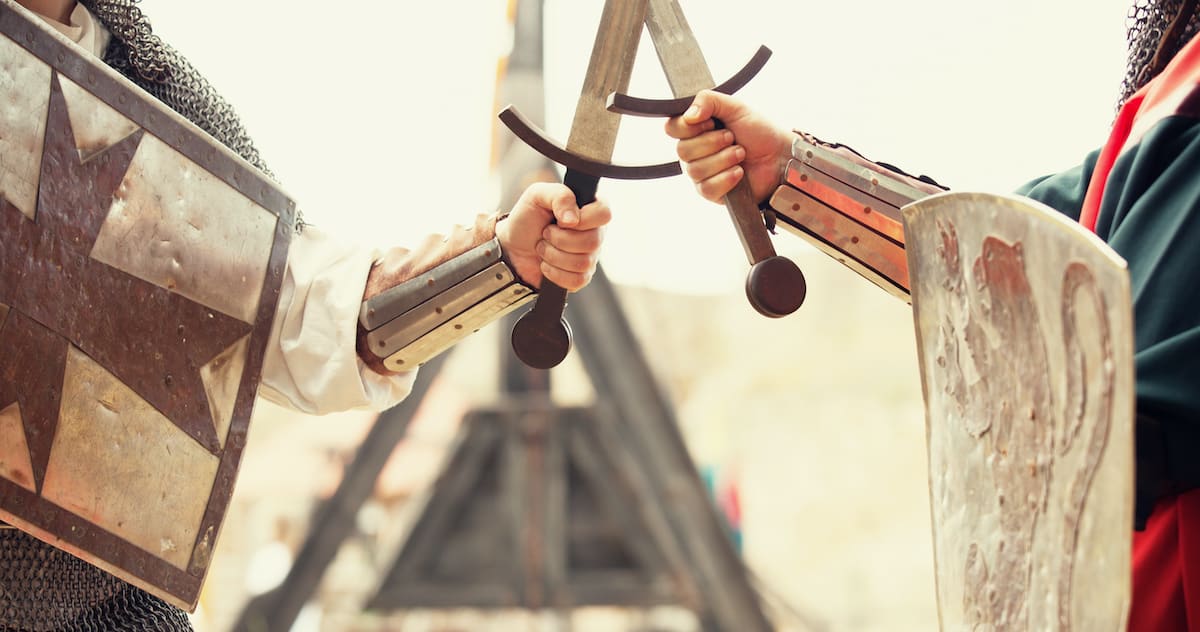 Historical Swords
Historical Swords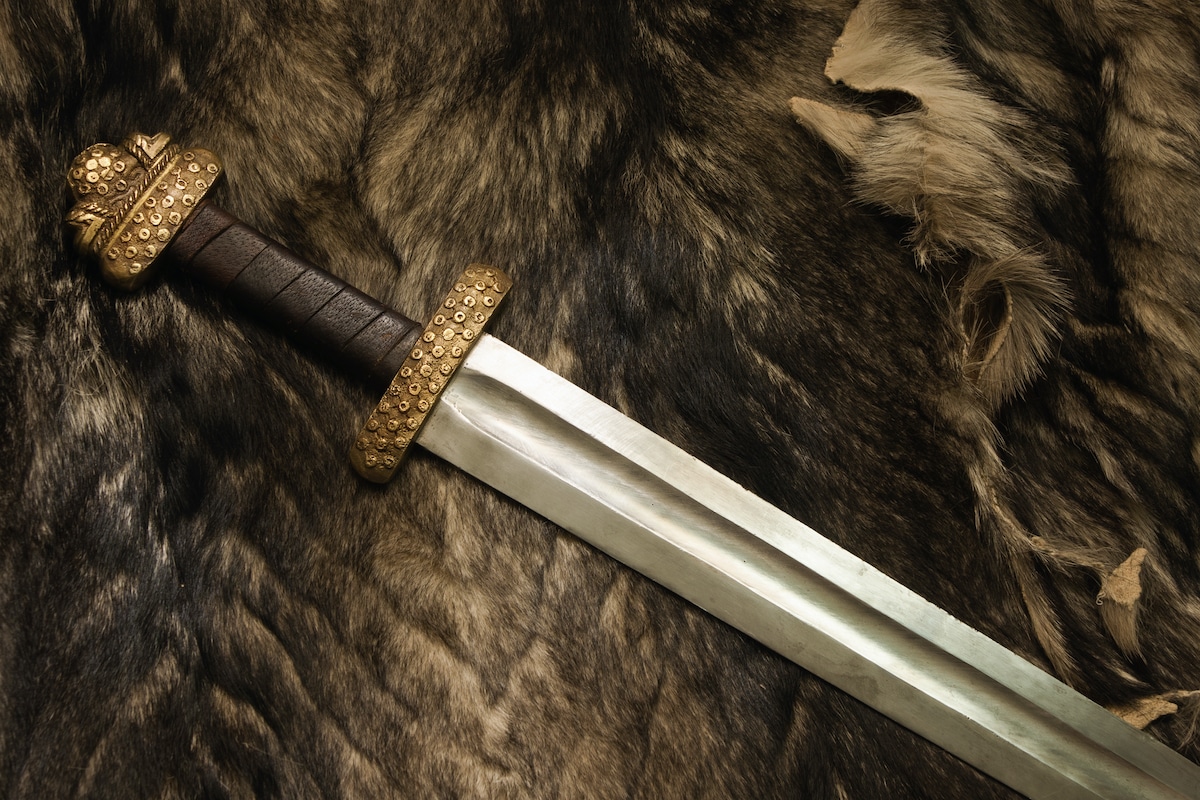 Norse & Viking Swords
Norse & Viking Swords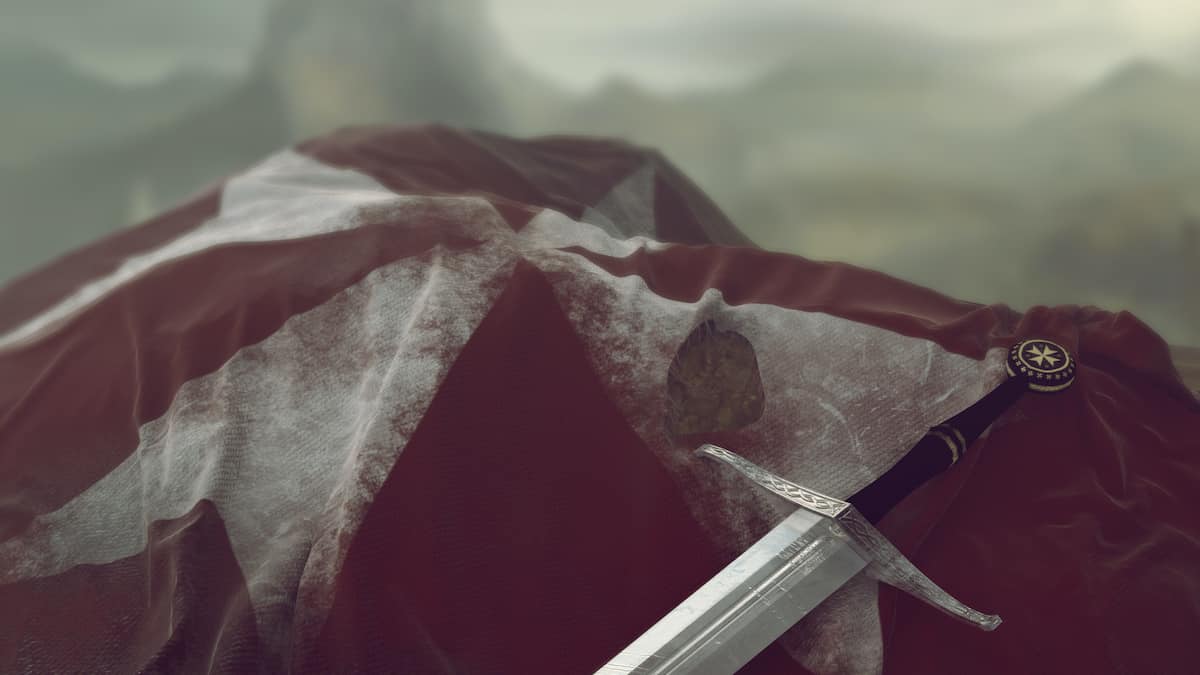 Templar Swords
Templar Swords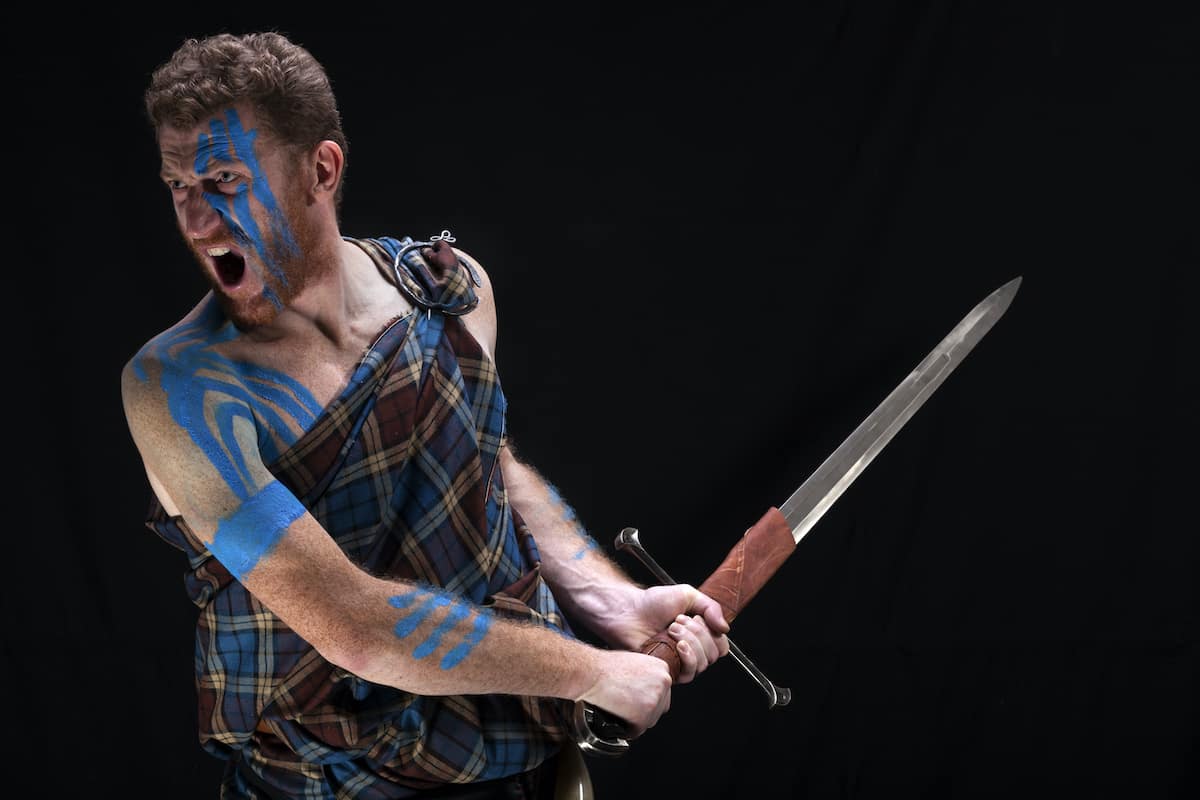 Claymore Swords
Claymore Swords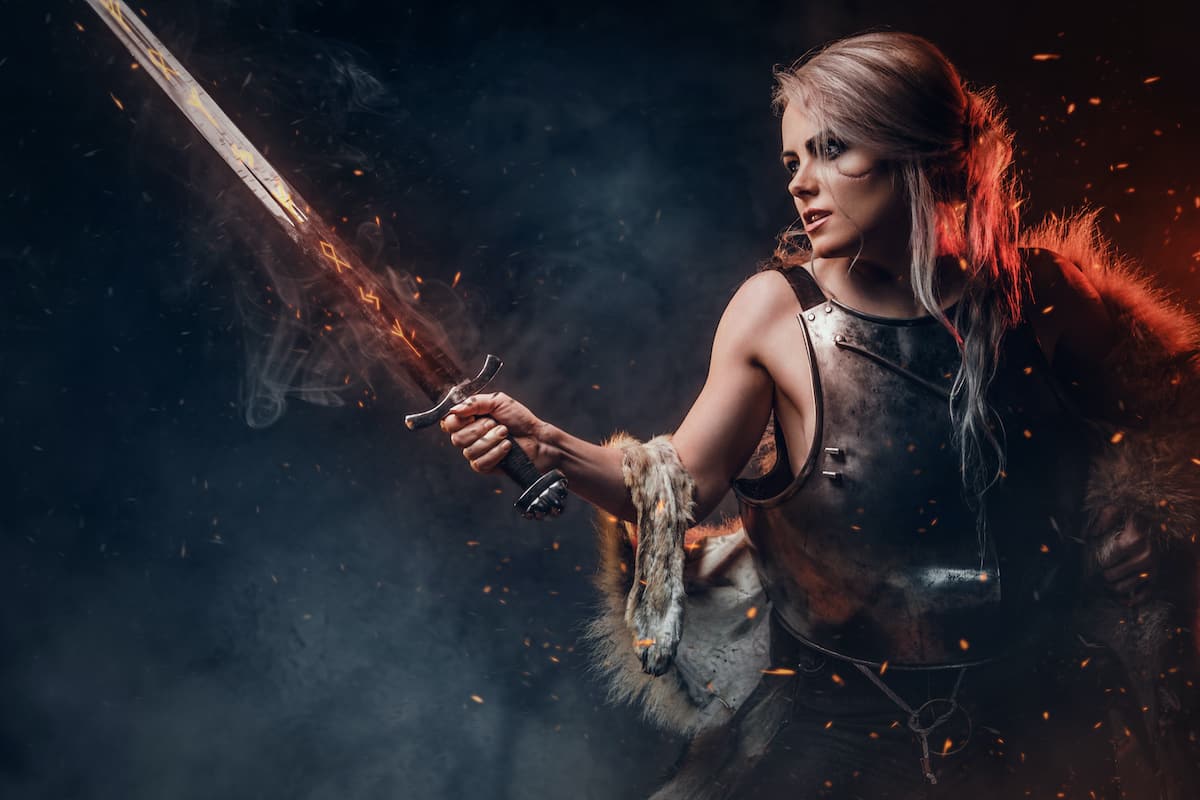 Fantasy Swords
Fantasy Swords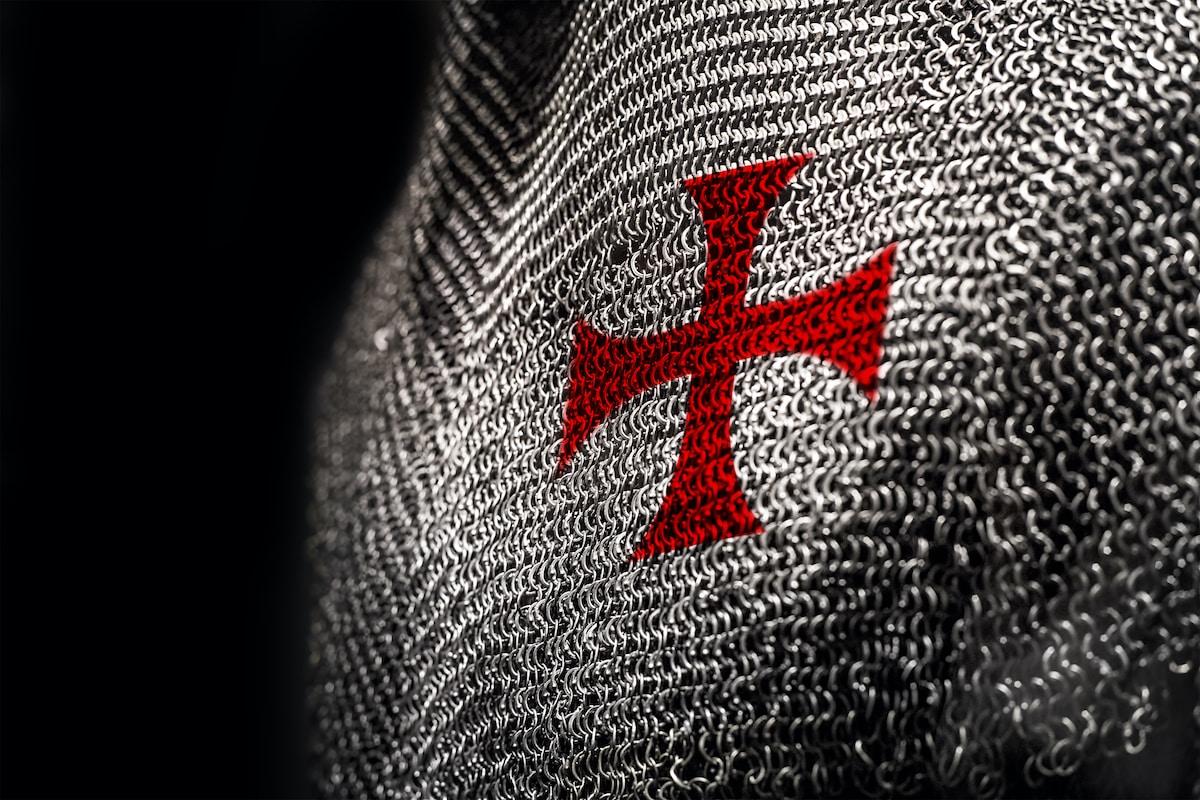 Chainmail
Chainmail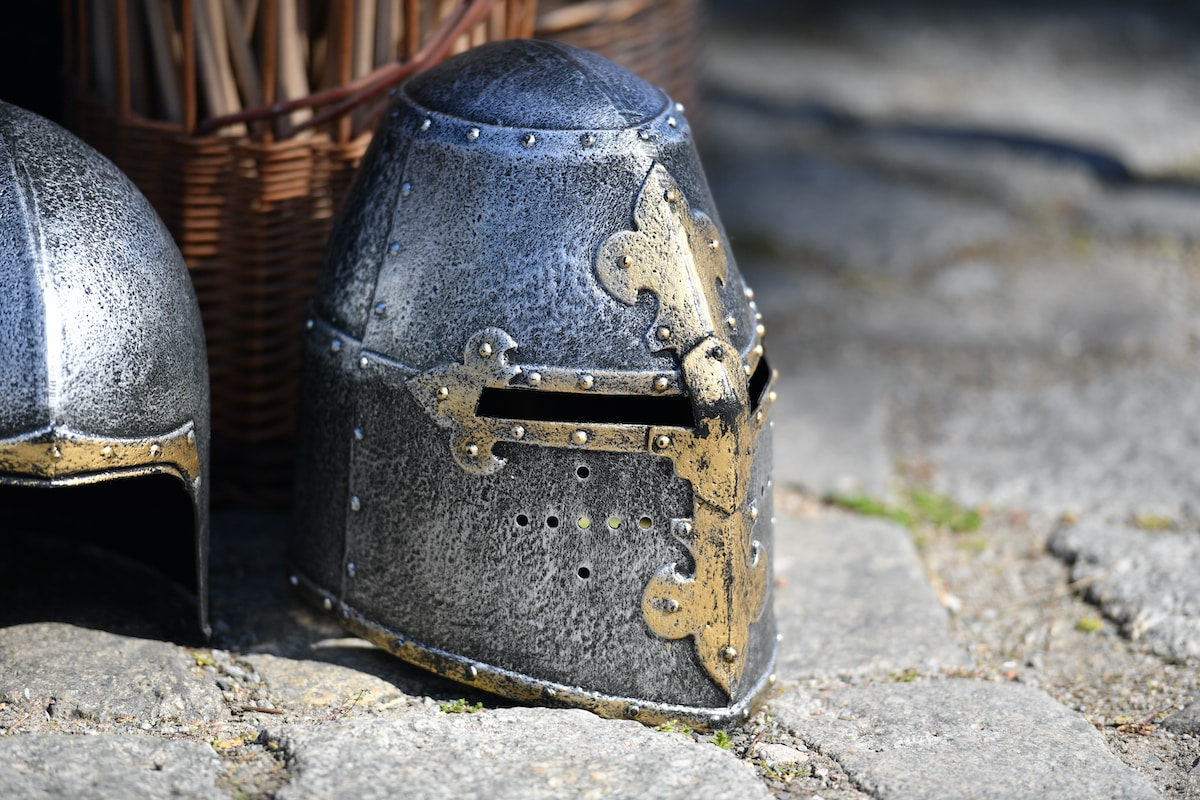 Helmets
Helmets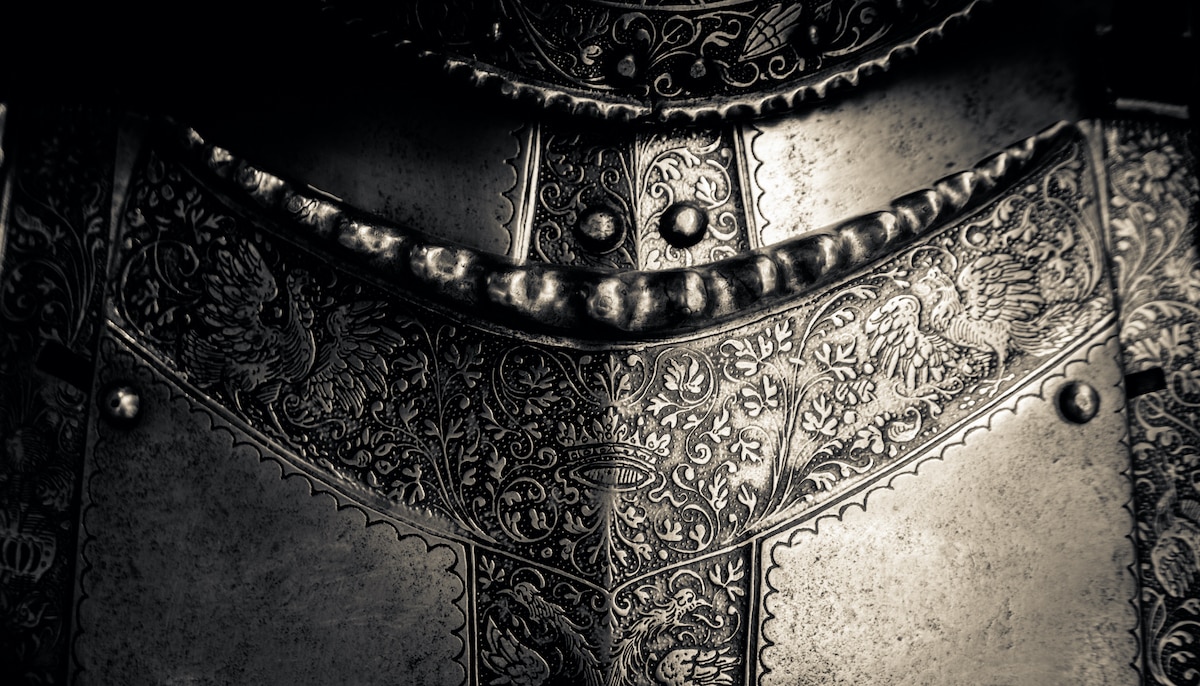 Torso Armor
Torso Armor Bracers and Arm Protection
Bracers and Arm Protection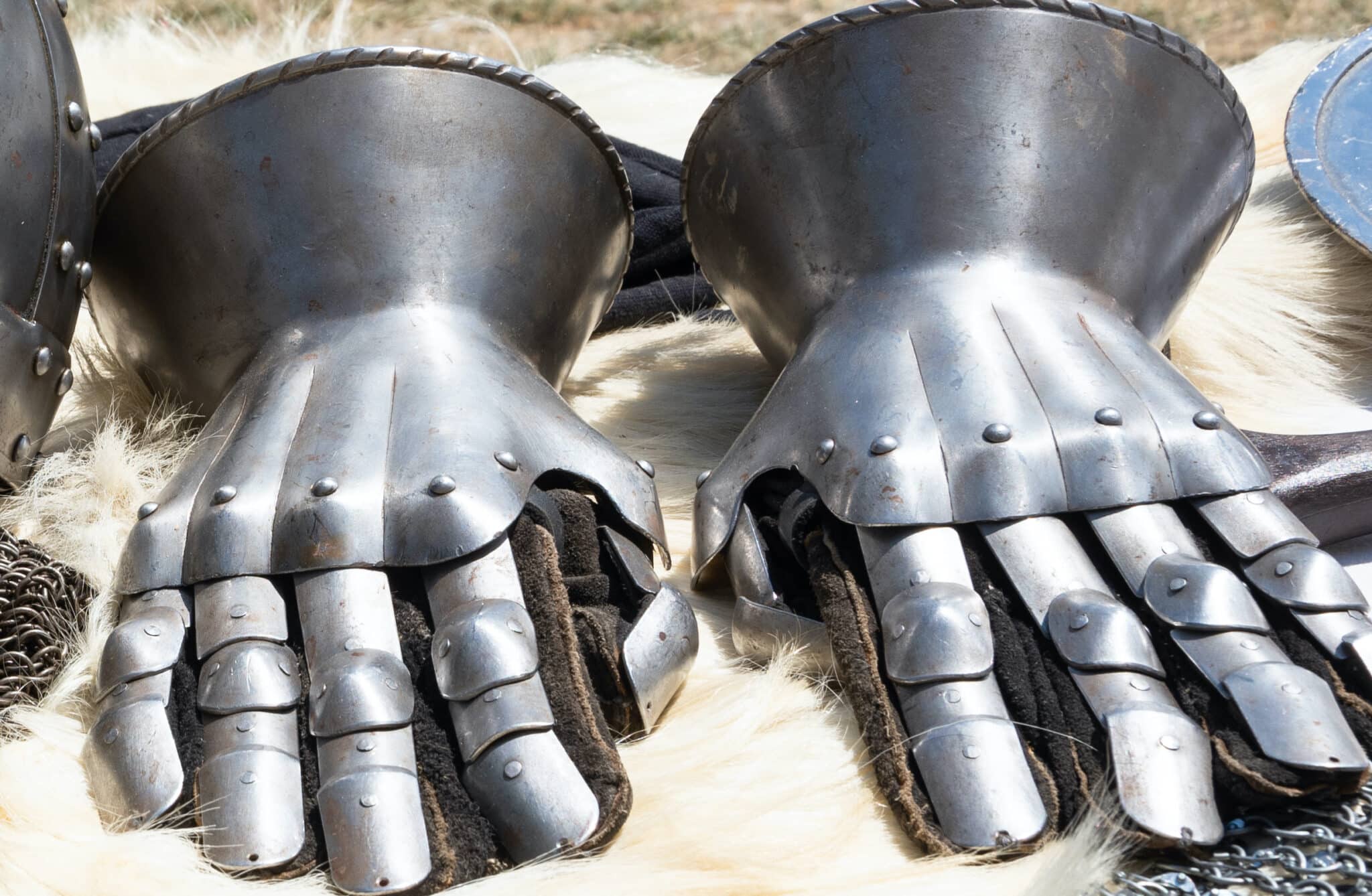 Gauntlets
Gauntlets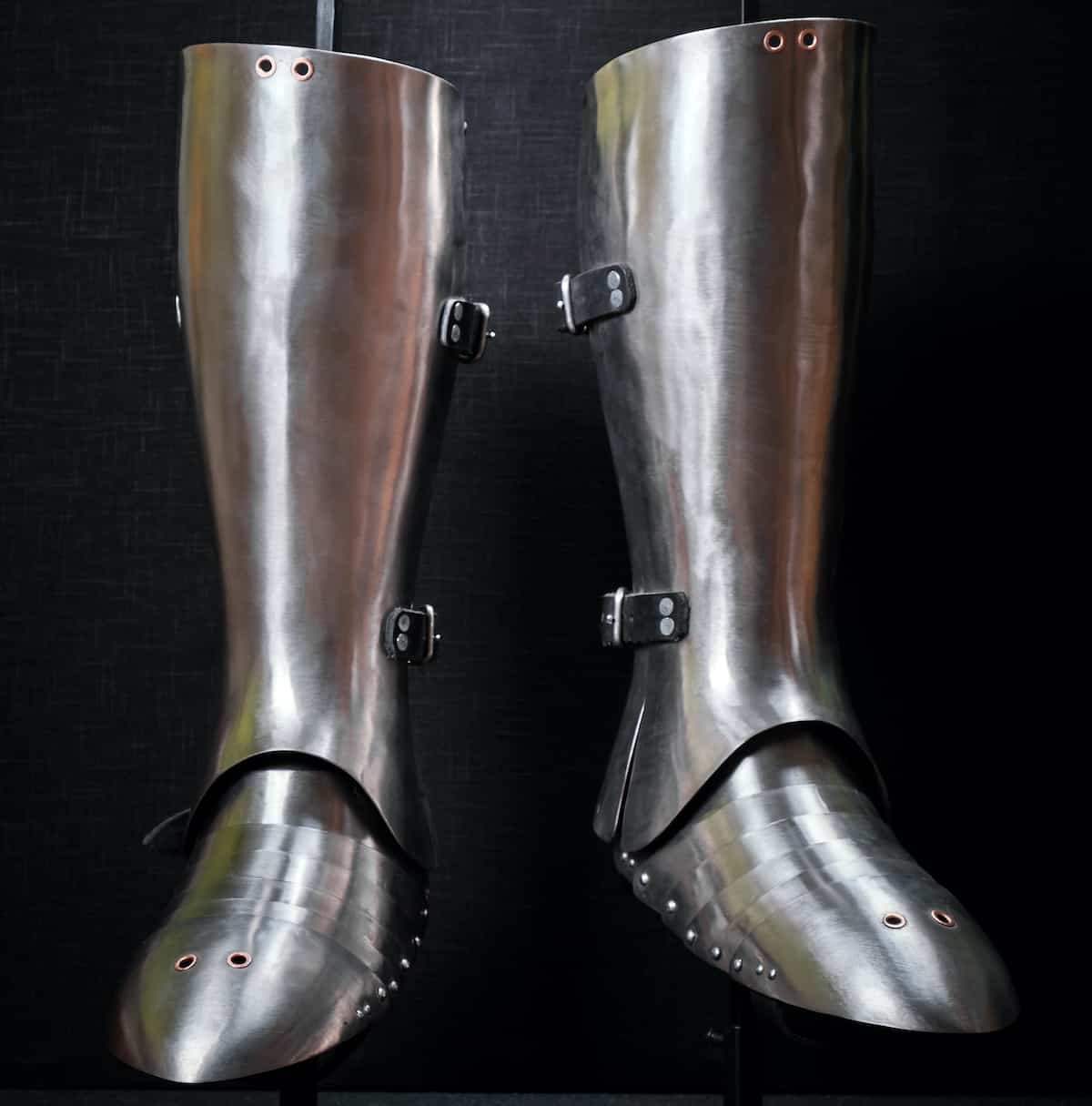 Leg Armor
Leg Armor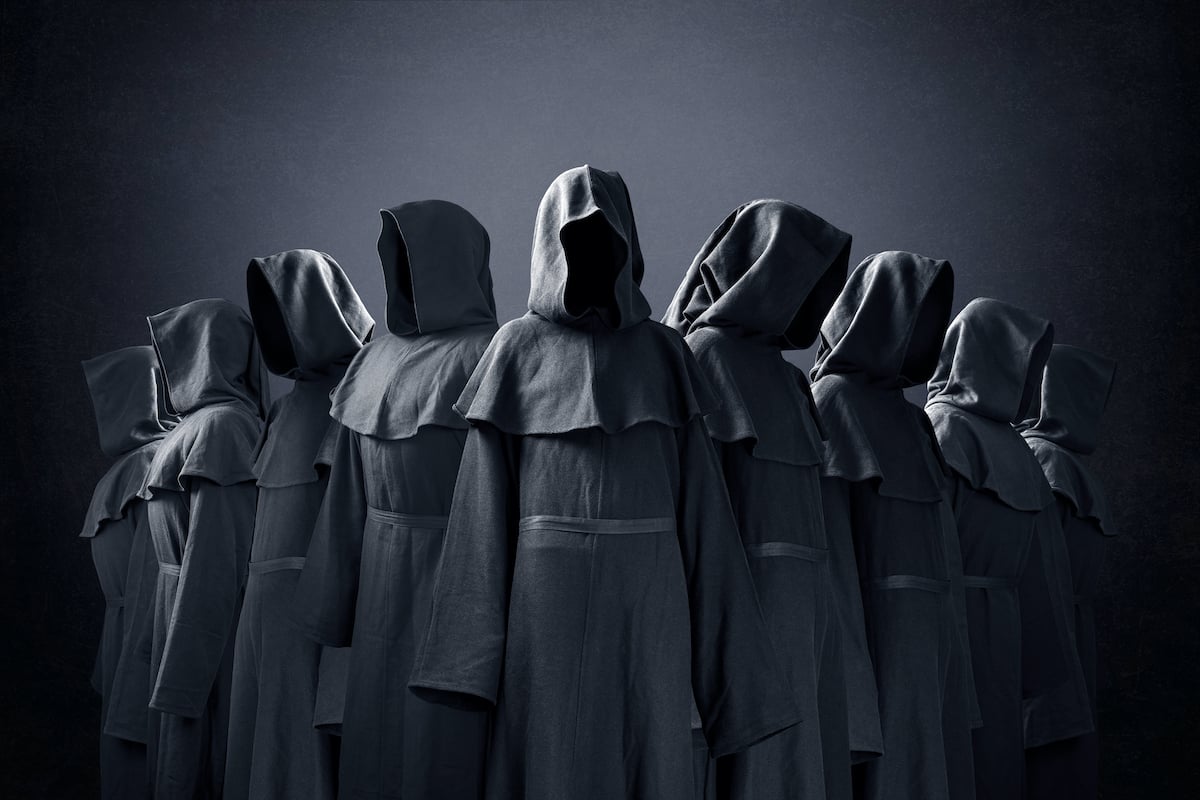 Cloaks
Cloaks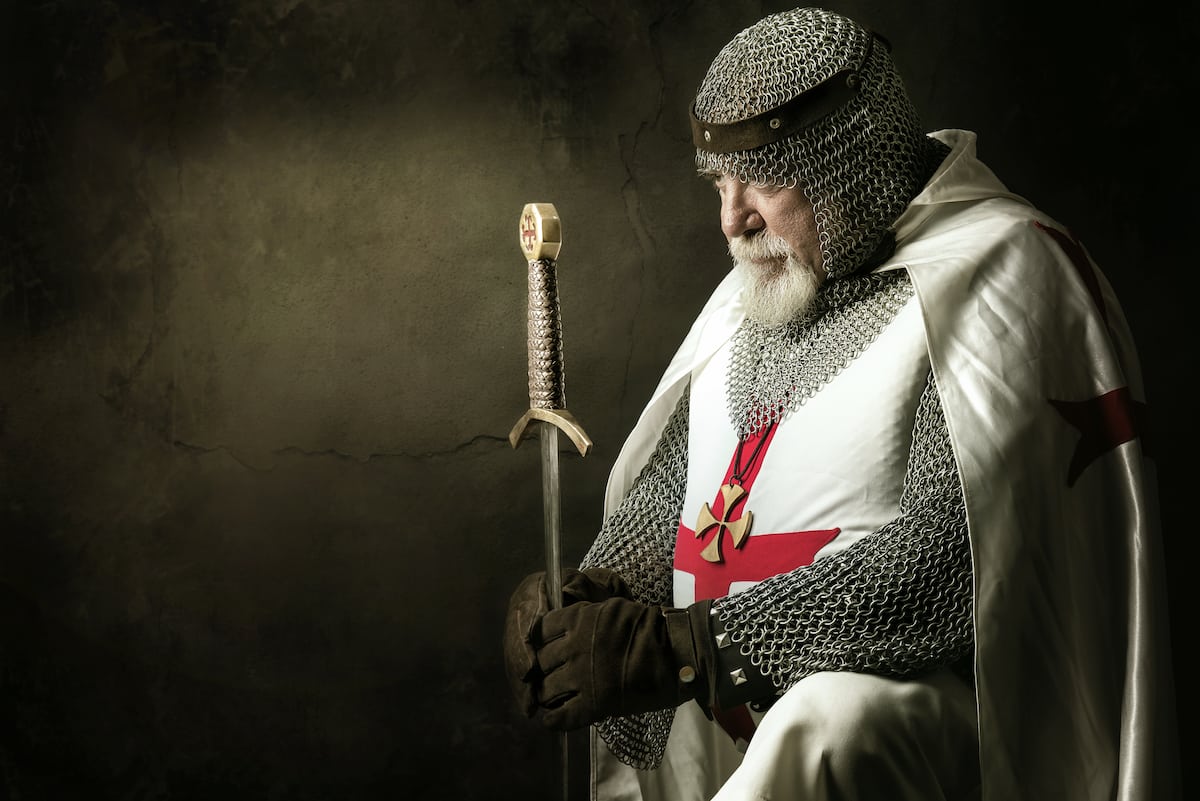 Tabards
Tabards Shirts
Shirts Tunics
Tunics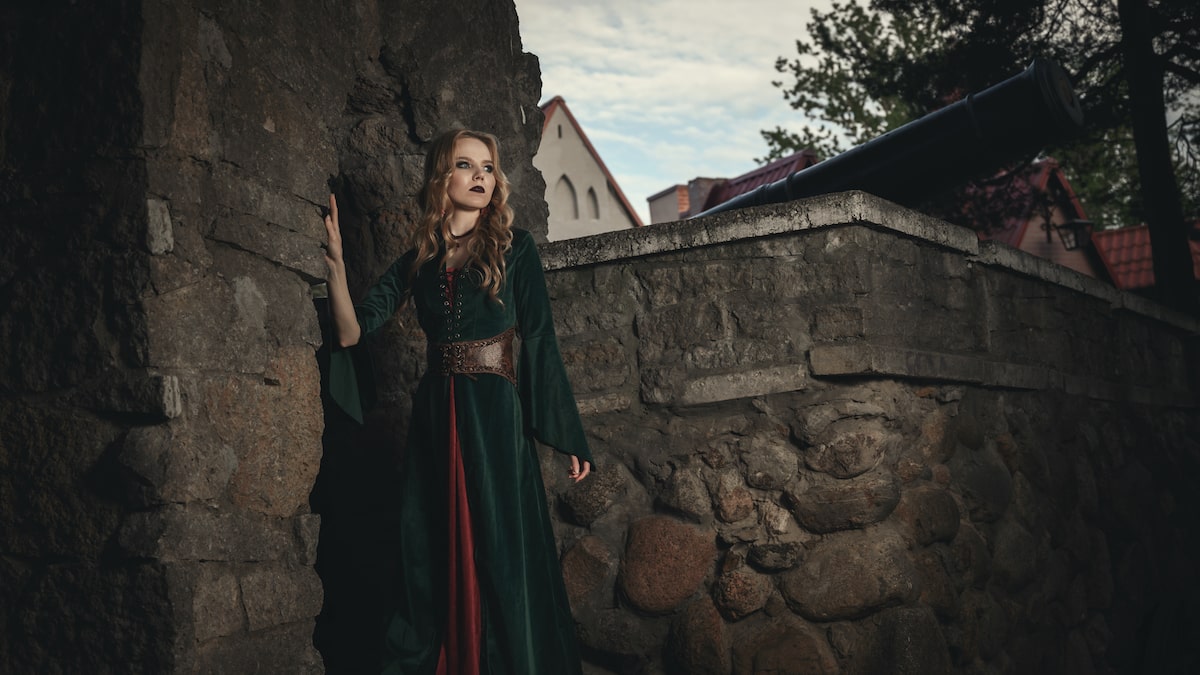 Dresses
Dresses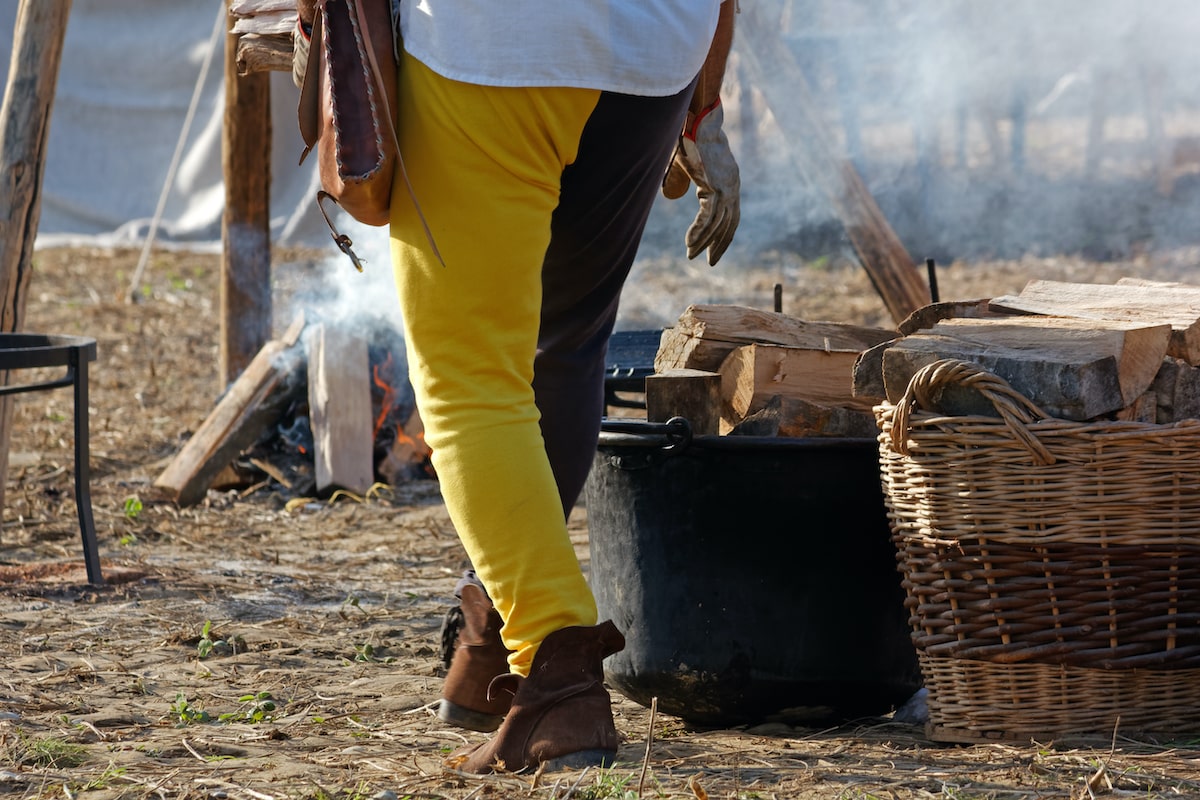 Pants
Pants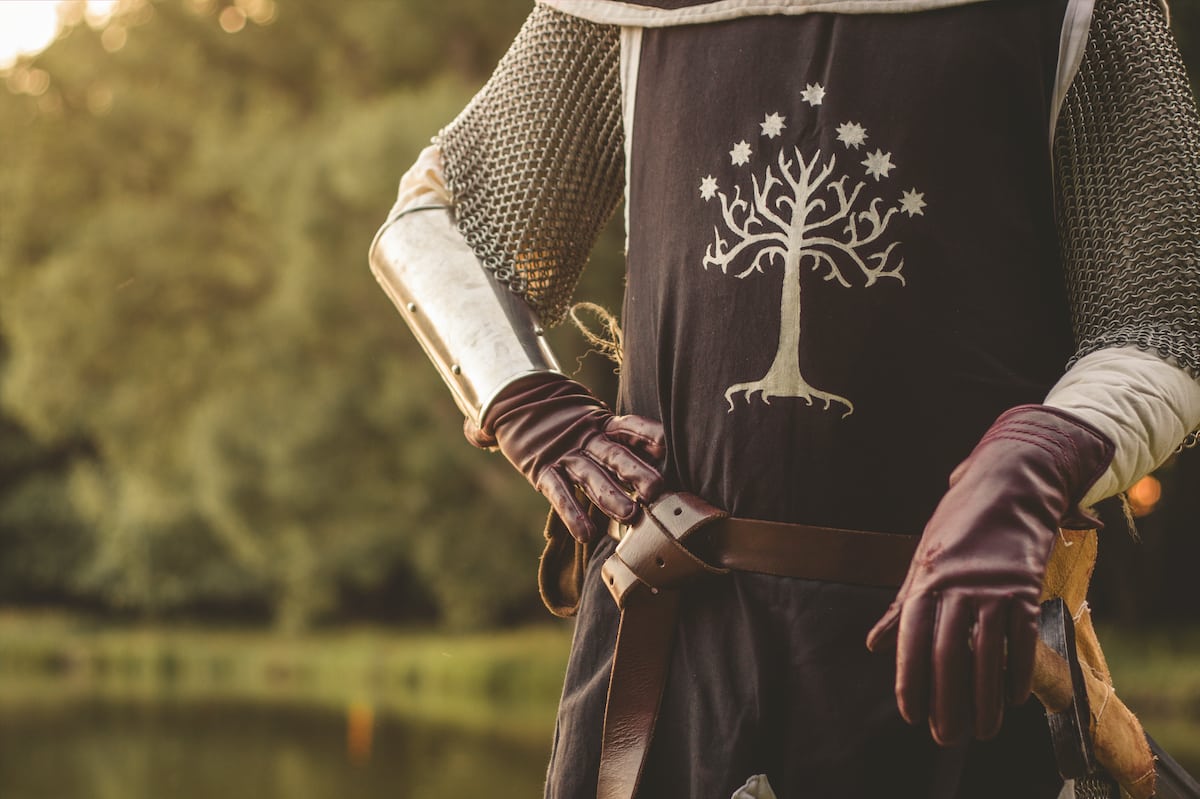 Gloves
Gloves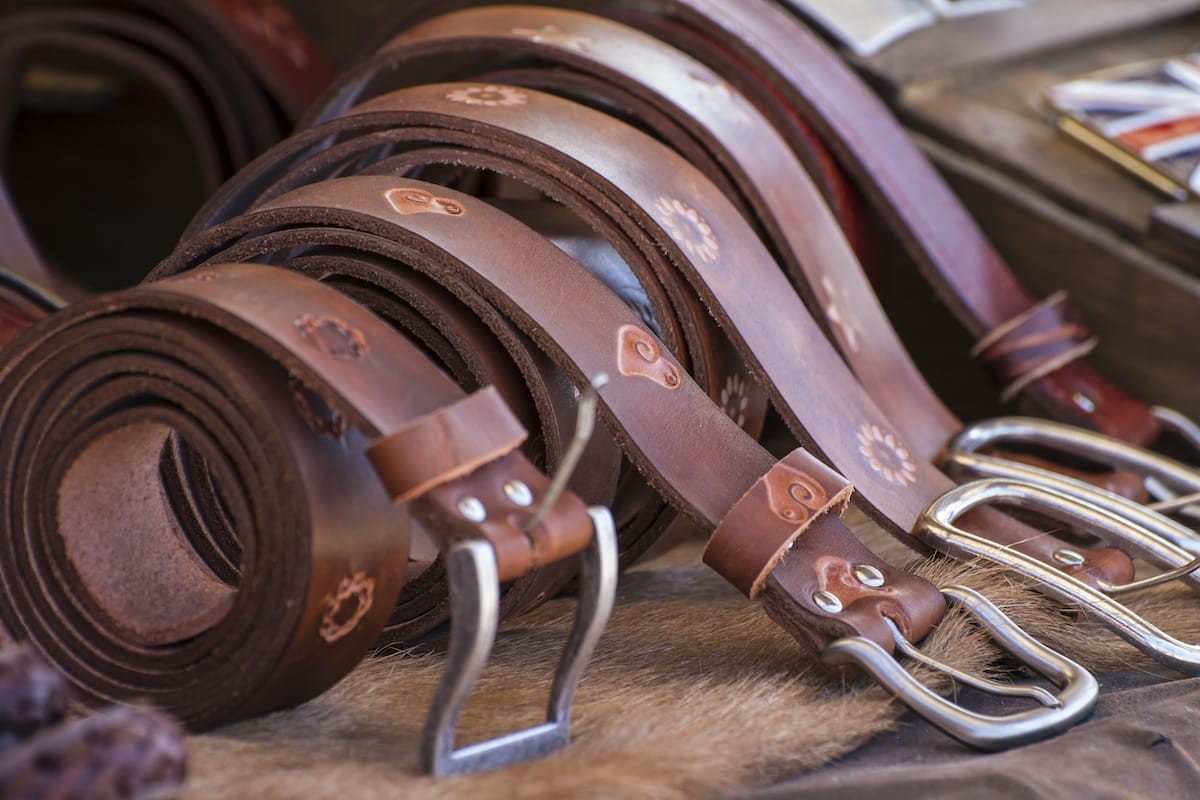 Belts
Belts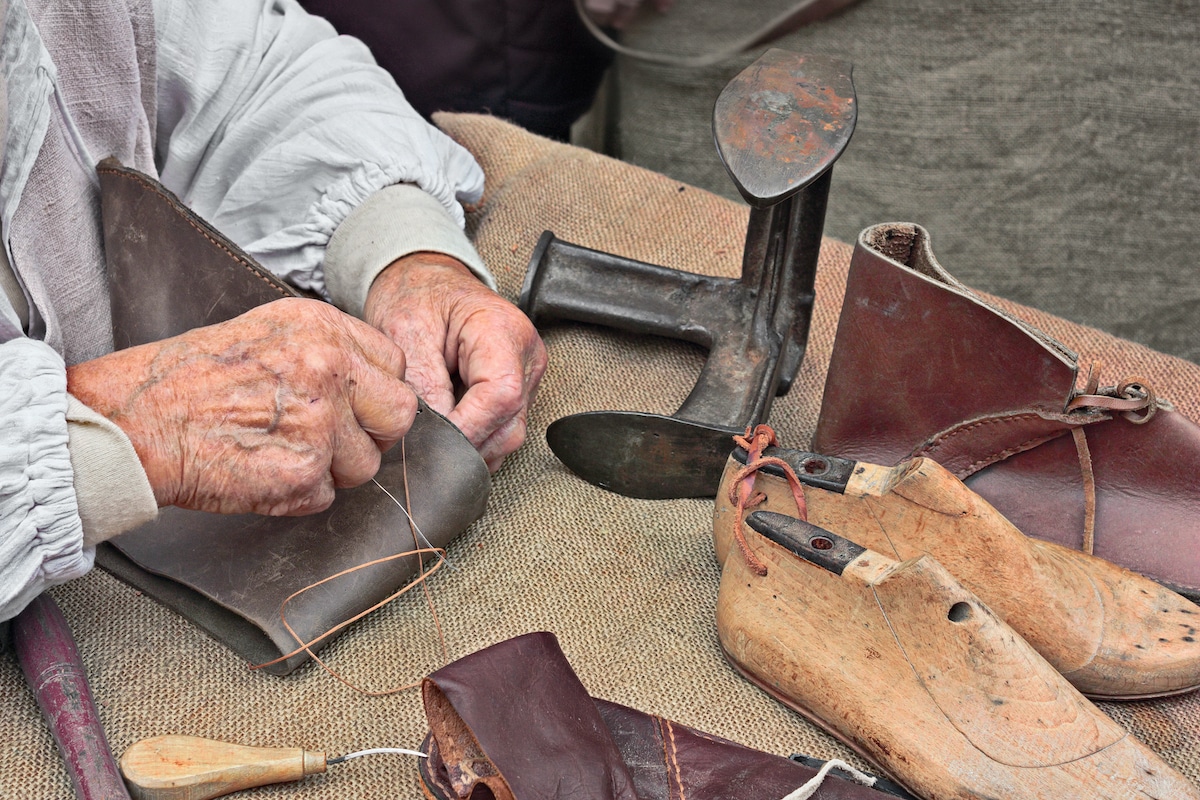 Shoes
Shoes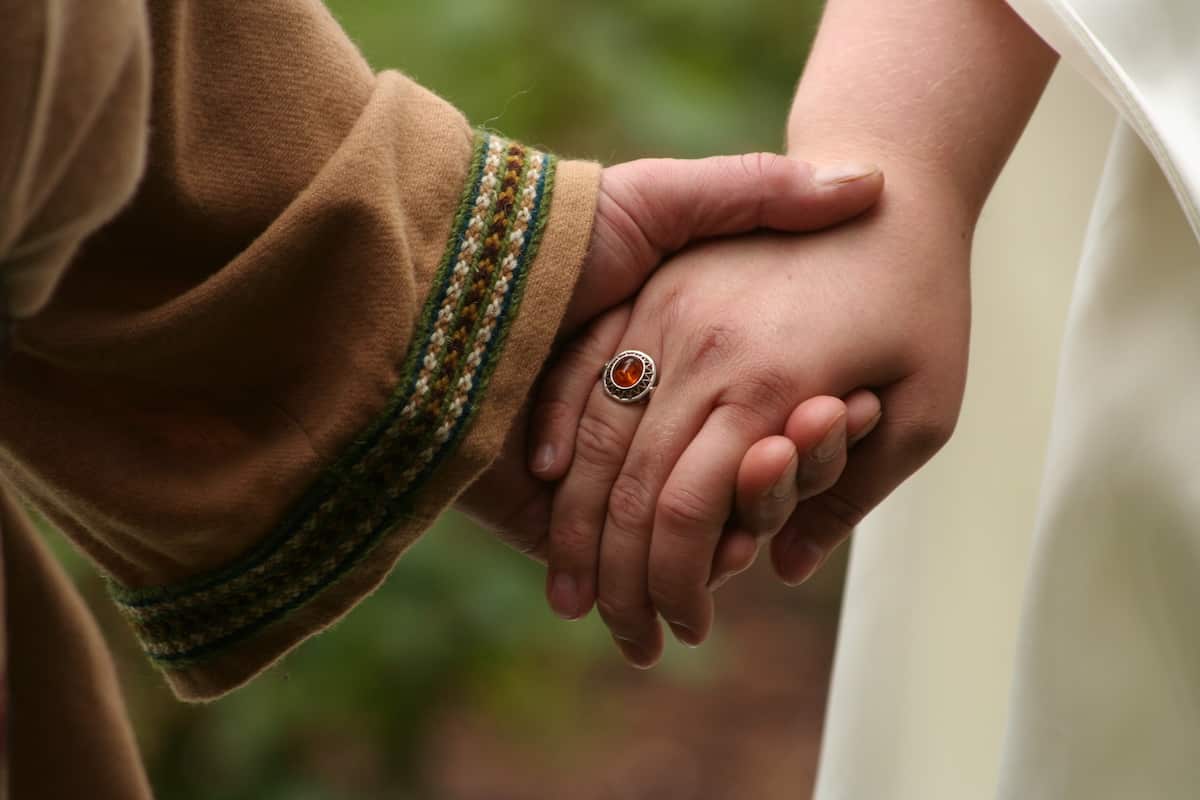 Rings
Rings Necklaces & Pendants
Necklaces & Pendants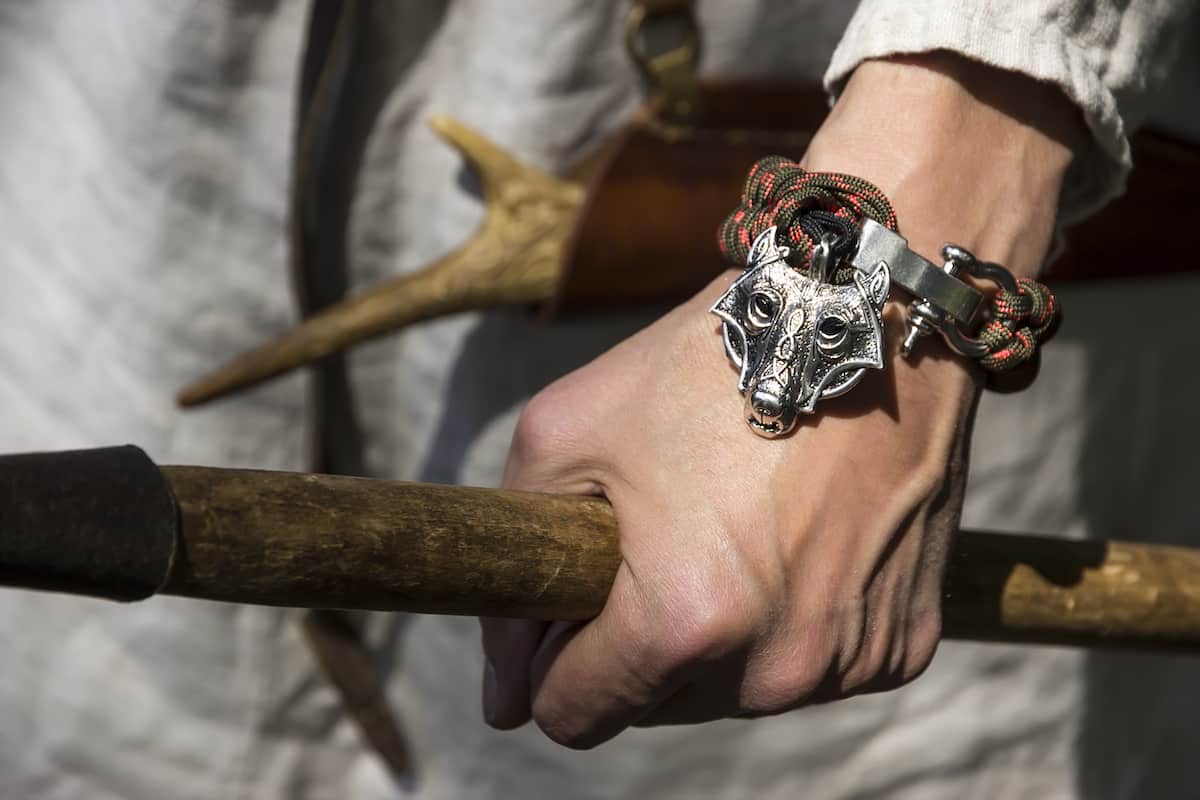 Bracelets
Bracelets